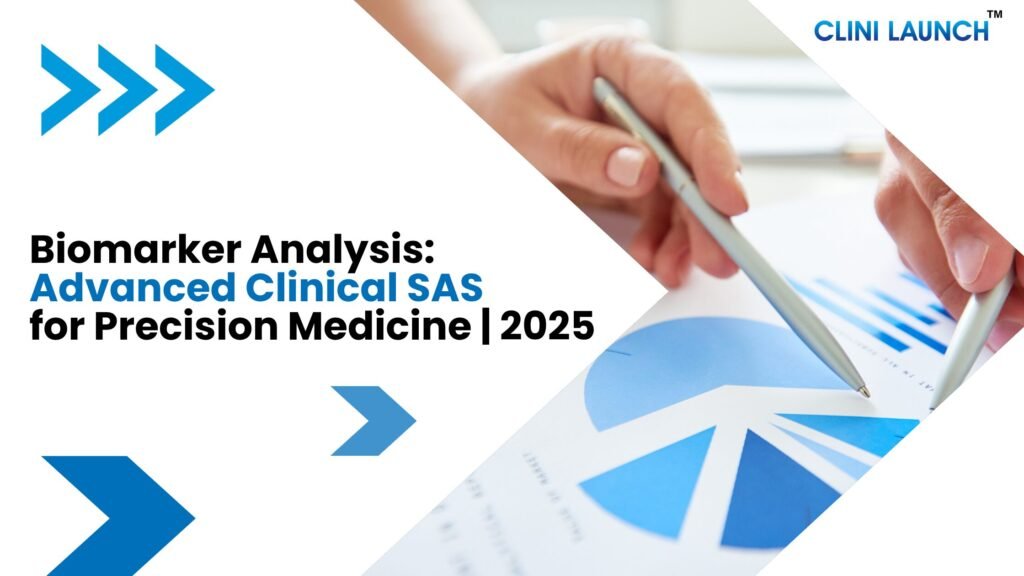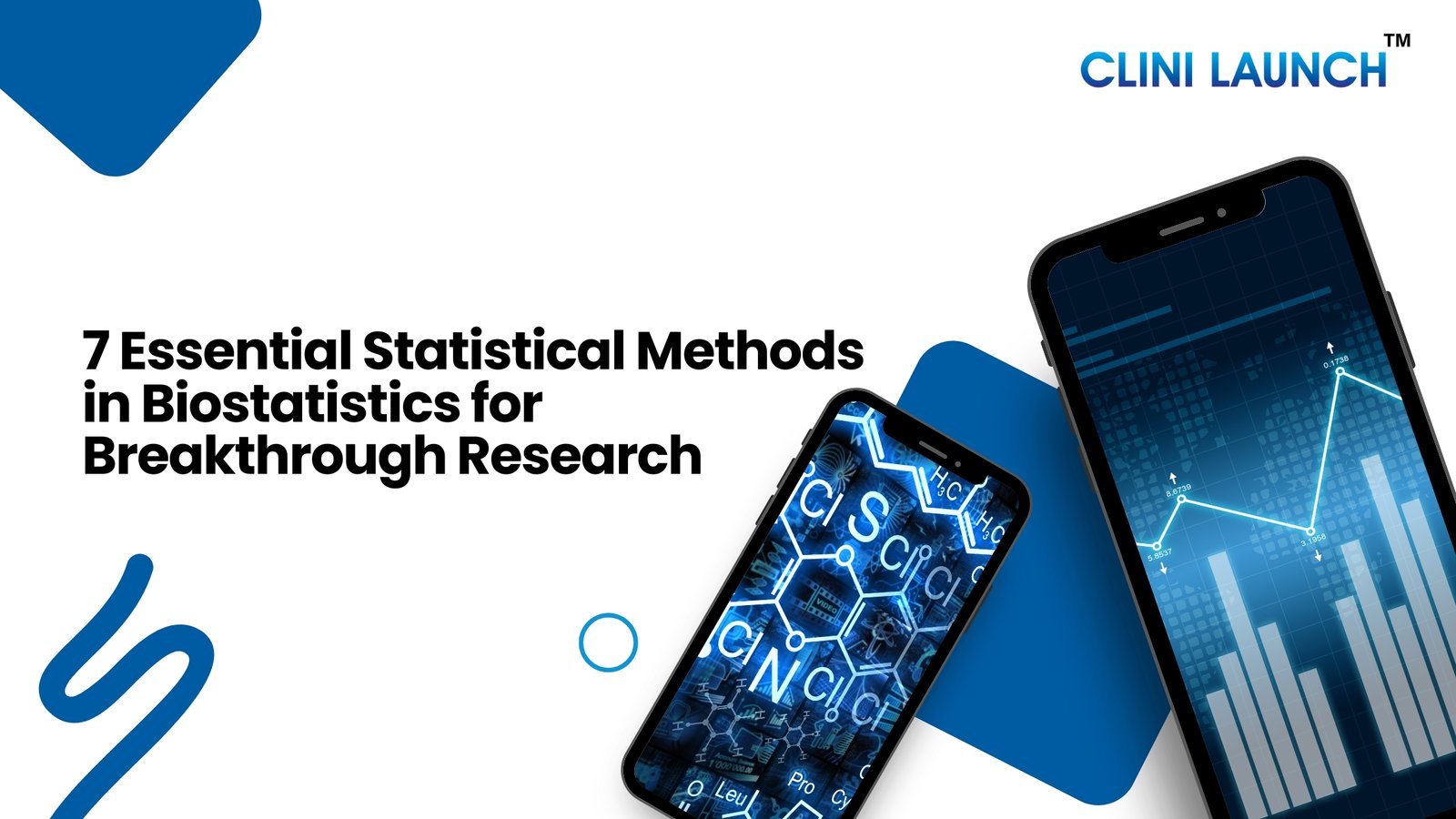The thriving field of biomarkers stands as a beacon of hope and innovation in modern medicine, fundamentally transforming how we understand, diagnose, and treat diseases. These critical biological indicators, approaching from single molecules to complex genetic signatures, are the very foundation of precision medicine, heralding an era of highly personalized and effective healthcare interventions.
Yet, the immense promise of biomarkers is intricately tied to the ability to rigorously analyze the vast, complex, and often disparate data they generate. This is precisely where the formidable capabilities of Clinical SAS emerge as an indispensable tool, providing the analytical backbone for robust Biomarker Analysis.
This comprehensive blog will guide you through the multifaceted landscape of biomarker analysis, explaining the profound and transformative role of Clinical SAS in orchestrating the seamless transition from raw biological measurements to actionable clinical insights.
We will explore the critical methodological imperatives, confront the inherent challenges, and delineate best practices, with a particular emphasis on the strategic orchestration of Biomarker Data Management, the intricate art of Biomarker Analysis SAS, the foundational discipline of Statistical Programming, and the cutting-edge domain of Omics Data Analysis.
Enroll Now: Clinical SAS course
The Strategic Imperative of Biomarkers in Contemporary Medical Advancement
Biomarkers, far from being an initial concept, have experienced a dramatic expansion in their utility, propelled by relentless advancements in molecular biology, genomics, proteomics, and the sophisticated analytical technologies underpinning these fields. Their roles are profoundly diverse and strategically integrated across the entire continuum of drug discovery, development, and clinical application:
Biomarkers serve as invaluable diagnostic and prognostic indicators, enabling earlier disease detection and more accurate predictions of disease progression. Consider the established utility of Prostate-Specific Antigen (PSA) for prostate cancer screening or the critical role of troponin levels in diagnosing myocardial infarction. Beyond diagnosis, they facilitate precise patient grouping, allowing for the segmentation of patient populations based on their probable response to a specific therapeutic intervention. This optimizes the design and efficiency of clinical trials, thereby enhancing therapeutic efficacy and patient safety.
Furthermore, biomarkers provide crucial pharmacodynamic readouts, allowing researchers to monitor the biological effects of a drug within the body, offering profound insights into its mechanism of action and guiding optimal dosing strategies. In the realm of safety assessment, biomarkers act as early warning signals, detecting potential adverse drug reactions at their initial stages, which allows for timely intervention and significantly improves overall patient safety.
Finally, in ongoing therapeutic monitoring, biomarkers enable dynamic tracking of patient response to treatment over time, empowering clinicians to make agile adjustments to therapy for superior patient outcomes. The ability to precisely measure, meticulously manage, and expertly interpret these diverse biological signals is an absolute prerequisite for realizing the full, transformative potential of personalized medicine.
Strategic Data Architectures: Foundations of Biomarker Data Management
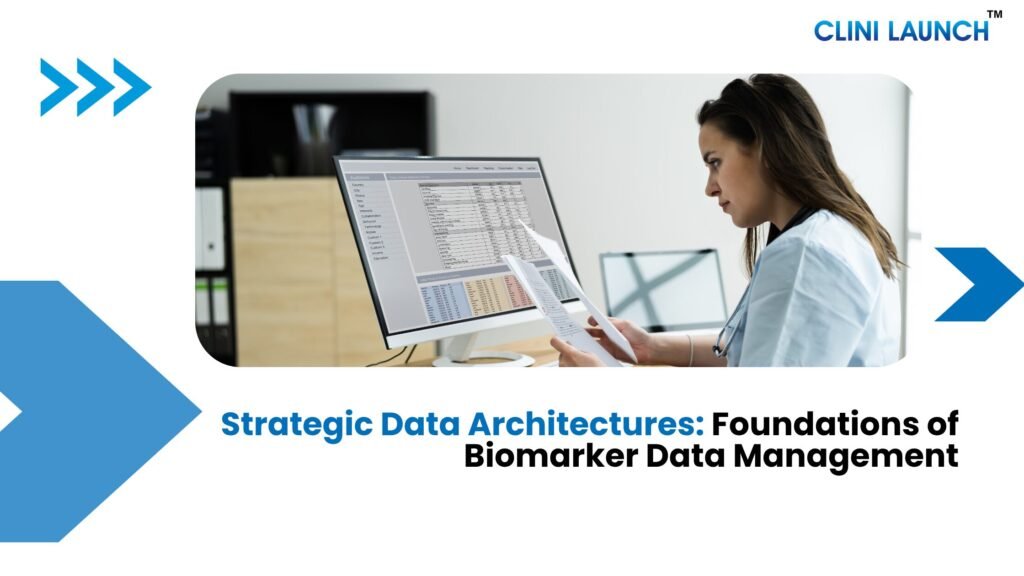
The initiation of any successful Biomarker Analysis endeavor fundamentally hinges upon the establishment of an exceptionally robust framework for Biomarker Data Management. The inherent nature of biomarker data, often characterized by its profound heterogeneity, presents a unique set of challenges. This data originates from a diverse array of analytical platforms, including but not limited to ELISAs, PCR assays, flow cytometry, mass spectrometry, and next-generation sequencing. This inherent diversity necessitates a highly structured and meticulous approach:
The absolute volume and velocity of omics data can generate terabytes of information, demanding scalable storage architectures and highly efficient processing pipelines. Furthermore, the different data formats – ranging from raw intensity values and normalized concentrations to precise genotype calls – necessitate rigorous standardization and harmonization efforts to ensure interoperability.
Crucially, the richness of associated metadata, encompassing patient demographics, precise sample collection details, specific assay parameters, and instrument settings, is not merely advantageous but critical for accurate interpretation and unwavering traceability. The absence of comprehensive metadata renders the biological context of the biomarker data tenuous, if not entirely lost.
Lastly, unwavering Data Quality Control (QC) is paramount, ensuring the accuracy, completeness, and consistency of every data point. This involves diligent checks for missing values, meticulous identification and treatment of outliers, adherence to detection limits, and scrupulous compliance with assay-specific quality metrics.
Clinical SAS, with its unparalleled data manipulation capabilities, assumes a truly pivotal role in this foundational stage. SAS possesses the inherent ability to efficiently import data from an expansive array of sources, including flat files (CSV), spreadsheets (Excel), and various database systems. It excels at performing intricate data cleaning operations, effectively handling missing values, and seamlessly merging disparate datasets based on common, unique identifiers.
Moreover, the sophisticated power of SAS macro programming can fully automate these often repetitive and labor-intensive data management tasks, thereby guarantee absolute consistency and significantly mitigate the potential for human error.
Strategic Considerations for Biomarker Data Management within the SAS Environment:
The adoption of CDISC (Clinical Data Interchange Standards Consortium) standards, specifically SDTM (Study Data Tabulation Model) and ADaM (Analysis Data Model), is not merely recommended but increasingly becoming an industry imperative. While specific biomarker domains within CDISC are continually evolving, strategically mapping biomarker data to relevant existing domains or judiciously creating custom domains can profoundly facilitate interoperability and significantly enhance readiness for regulatory submissions.
Furthermore, the implementation of rigorous version control for all datasets and analytical programs is absolutely essential, ensuring full auditability and unwavering reproducibility. Finally, the paramount importance of data security and privacy cannot be overstated. Protecting sensitive patient information, especially in the context of genetic or genomic data, is a non-negotiable ethical and regulatory requirement, demanding strict adherence to frameworks such as GDPR and HIPAA.
Data Integrity: Pre-Analytical Processing and Normalization
Following the meticulous management of biomarker data, a substantial phase of pre-processing is almost invariably required before any truly meaningful analysis can commence. This pre-analytical stage is crucial for effectively mitigating technical variability and ensuring that any observed differences or patterns genuinely reflect underlying biological phenomena rather than experimental artifacts or systematic errors.
This critical phase encompasses several key operations: Background Correction and Noise Reduction are particularly relevant for imaging-based or high-throughput evaluation, involving the systematic subtraction of background signals and the judicious filtering out of random noise. Normalization stands as an exceptionally critical step, especially relevant for omics data, aimed at meticulously accounting for technical variations that can arise across different samples, analytical batches, or experimental runs.
Normalization methodologies are meticulously designed to adjust for intrinsic differences in sample input, variations in analyze efficiency, or subtle instrument-specific deviations. Widely employed normalization techniques include: housekeeping gene normalization (a cornerstone for gene expression studies, utilizing stably and constitutively expressed genes to normalize target gene expression levels); quantile normalization (a powerful technique that adjusts the distributions of intensities across multiple samples to render them statistically identical); and total sum normalization (a scaling method where data are adjusted such that the sum of values for each sample remains constant).
Additionally, the meticulous Outlier Detection and Handling involves identifying and appropriately managing extreme data points that, if unaddressed, could exert an undue and distorting influence on subsequent statistical analyses. This might involve robust statistical methods like Winsorization, trimming, or the application of specifically designed robust statistical tests.
Finally, Log Transformation is frequently applied, particularly for biomarker measurements exhibiting a skewed distribution, as it often helps to achieve a more symmetrical, near-normal distribution, which is often a fundamental assumption for various parametric statistical tests.
Harnessing Clinical SAS for Pre-processing Prowess:
SAS provides an extensive repertoire of procedures and functions perfectly suited for these intricate pre-processing steps. PROC SQL stands as a powerful tool for complex data querying and highly sophisticated data manipulation. PROC UNIVARIATE and PROC SGPLOT are invaluable for the meticulous visualization of data distributions and the precise identification of potential outliers.
Furthermore, the unparalleled flexibility of Data Step programming allows for the creation of highly customized transformations, intricate calculations, and the implementation of bespoke normalization algorithms. For the more advanced normalization techniques frequently encountered in the realm of omics data, SAS offers seamless integration with external statistical computing environments such as R or Python through its PROC IML or through the capability to execute external scripts, thereby extending its analytical reach.
Initial Data Assessment: Exploratory Data Analysis (EDA) for Biomarker Insights
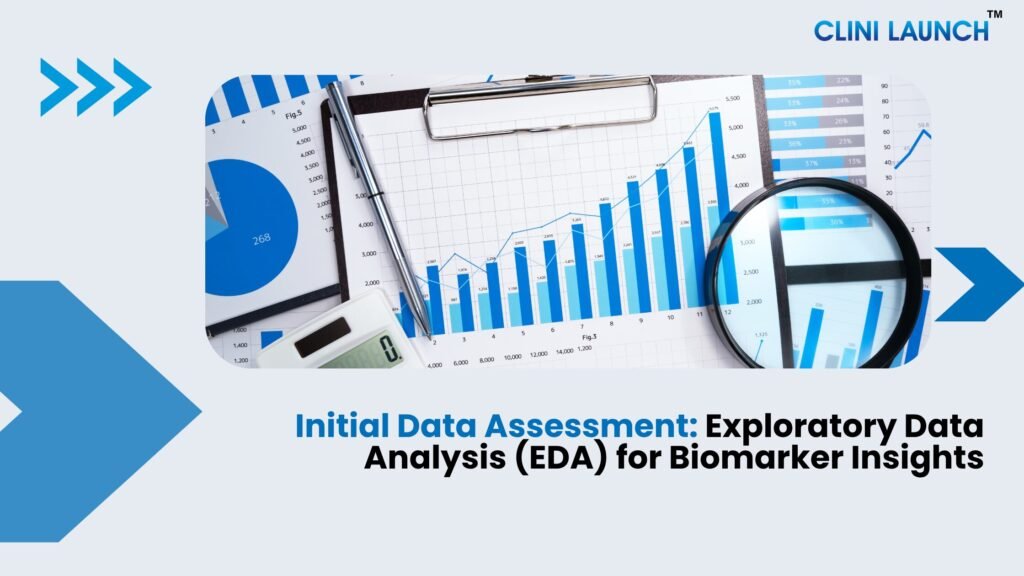
Before embarking on the development of complex statistical models, Exploratory Data Analysis (EDA) emerges as an absolutely indispensable phase. EDA is an iterative process that provides a preliminary yet profound understanding of the data’s inherent characteristics, facilitates the identification of potential relationships, and serves as a vital confirmatory step for data quality. This stage often serves as a crucial compass, guiding subsequent analytical decisions and shaping the overall research trajectory.
EDA commences with the calculation of comprehensive Descriptive Statistics, encompassing measures such as means, medians, standard deviations, ranges, and frequencies for all key biomarker variables. Complementing this, the creation of compelling Data Visualizations is paramount, allowing for an intuitive grasp of data patterns. This includes the generation of histograms and density plots to visually represent the distribution of individual biomarkers.
Box plots are particularly insightful for comparing biomarker levels across distinct groups (e.g., disease vs. healthy cohorts, or treated vs. placebo arms). Scatter plots are essential for exploring potential relationships between two biomarkers or between a biomarker and a crucial clinical outcome. For high-dimensional omics data, heatmaps offer a powerful visual tool for discerning patterns and correlations among a multitude of biomarkers.
SAS, with its rich graphical capabilities and statistical procedures, is an ideal environment for performing comprehensive EDA. PROC MEANS, PROC FREQ, and PROC TABULATE are standard tools for generating descriptive statistics. PROC SGPLOT and PROC GCHART offer extensive options for creating high-quality, customizable visualizations that are critical for identifying trends, assessing data quality, and communicating preliminary findings effectively.
Advanced Statistical Programming and Biomarker Analysis SAS
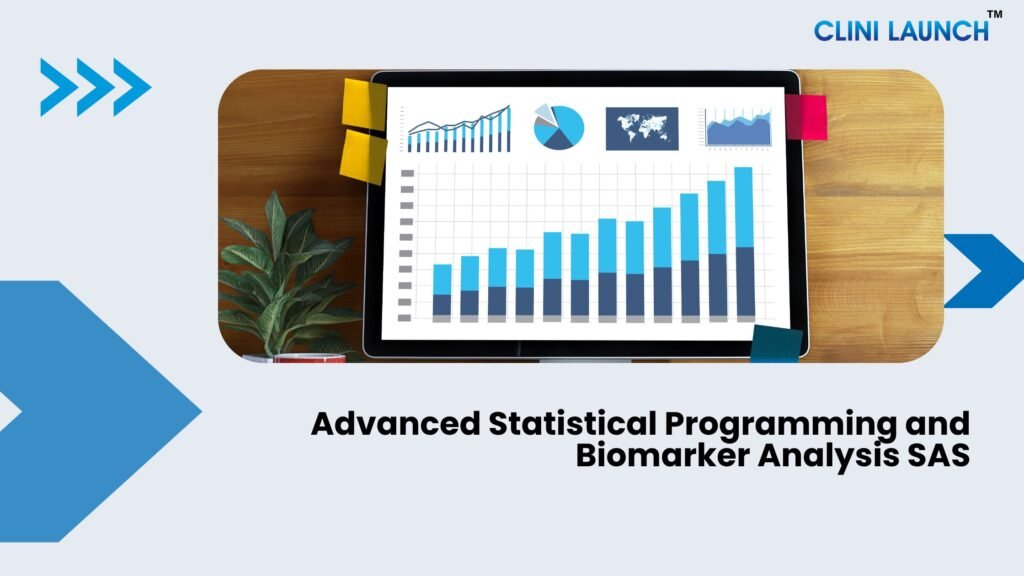
With a clean, normalized, and well-understood dataset, the focus shifts to advanced statistical methodologies to derive meaningful biological and clinical insights. This is the core of Biomarker Analysis SAS, where sophisticated Statistical Programming techniques are employed to address specific research questions.
Comparative Analysis: Discriminating Between Groups
One of the most frequent objectives in biomarker analysis is to identify biomarkers that differ significantly between distinct groups, such as diseased versus healthy individuals, or responders versus non-responders to therapy.
- T-tests and ANOVA: For comparing mean biomarker levels between two or more groups (e.g., PROC TTEST, PROC GLM).
- Non-parametric Tests: When data distributions do not meet the assumptions of parametric tests (e.g., Wilcoxon rank-sum test using PROC NPAR1WAY for two groups, Kruskal-Wallis test for more than two groups).
- Mixed Models: For longitudinal biomarker data where repeated measurements are taken on the same subjects (e.g., PROC MIXED). This is crucial for understanding biomarker trajectories over time and accounting for within-subject correlation.
Association Analysis: Linking Biomarkers to Outcomes
Understanding the relationship between biomarker levels and clinical outcomes (e.g., disease severity, progression-free survival, overall survival) is another critical aspect.
- Correlation Analysis: To quantify the strength and direction of linear relationships between biomarkers and continuous outcomes (e.g., PROC CORR).
- Regression Analysis:
- Linear Regression (PROC REG, PROC GLM): For continuous outcomes.
- Logistic Regression (PROC LOGISTIC): For binary outcomes (e.g., disease presence/absence, response/non-response). This is particularly valuable for developing diagnostic or prognostic models based on biomarker panels.
- Cox Proportional Hazards Regression (PROC PHREG): For time-to-event outcomes (e.g., survival analysis), crucial for assessing the prognostic value of biomarkers.
- Machine Learning Approaches: For complex, high-dimensional data, machine learning algorithms can be employed for prediction, classification, and feature selection. While SAS has native machine learning capabilities (PROC HPFOREST, PROC HPSVM), integration with R or Python for more specialized algorithms is common.
Biomarker Discovery and Validation
The true power of biomarkers often lies not in individual markers but in panels or signatures. This leads to more complex analytical strategies.
- Dimensionality Reduction: Techniques like Principal Component Analysis (PCA) (PROC PRINCOMP) or Factor Analysis can reduce the number of variables while retaining most of the variance, especially important in O mics Data Analysis where the number of features can far exceed the number of samples.
- Clustering Analysis: To identify natural groupings of samples or biomarkers based on their expression patterns (e.g., PROC CLUSTER, PROC VARCLUS). This can reveal novel disease subtypes or distinct biomarker signatures.
- Receiver Operating Characteristic (ROC) Curve Analysis: To evaluate the diagnostic or prognostic performance of individual biomarkers or biomarker panels (e.g., PROC LOGISTIC output, PROC ROC). This provides metrics like sensitivity, specificity, and Area Under the Curve (AUC).
Clinical SAS: Core Analytical Capabilities
Clinical SAS, through its vast array of procedures and its powerful macro language, provides unparalleled control and flexibility for implementing these advanced statistical analyses. The ability to write custom data steps, macros, and integrate with other statistical software environments makes SAS an incredibly versatile platform for the entire analytical lifecycle of biomarker data. Ensuring reproducibility through well-documented code and robust version control within the SAS environment is paramount for regulatory compliance and scientific integrity.
Omics Data Analysis in Clinical SAS
The arrival of “omics” technologies – genomics, transcriptomics, proteomics, metabolomics – has revolutionized biomarker discovery by enabling comprehensive, high-throughput profiling of biological systems. This influx of high-dimensional data presents both immense opportunities and significant analytical challenges, pushing the boundaries of traditional Biomarker Analysis SAS.
Challenges in Omics Data Analysis:
- High Dimensionality: The number of features (e.g., genes, proteins) vastly exceeds the number of samples, leading to the “curse of dimensionality” and increased risk of false positives.
- Multiple Testing Problem: Performing thousands of statistical tests simultaneously requires rigorous correction methods to control the False Discovery Rate (FDR).
- Data Sparsity and Noise: Omics data can be inherently noisy and contain many zeros, particularly in single-cell genomics.
- Biological Complexity: Interpreting biological significance from vast datasets requires integrating pathways, networks, and prior biological knowledge.
SAS’s Role in Omics Data Analysis:
While specialized bioinformatics tools (e.g., R Bioconductor packages, Python libraries) are often at the forefront of initial omics data processing (e.g., raw read alignment, quantification), Clinical SAS remains critically important for:
- Downstream Statistical Analysis: Once pre-processed and normalized (often outside SAS), omics data can be imported into SAS for robust statistical comparisons (e.g., identifying differentially expressed genes/proteins between groups using PROC GLM or PROC MIXED).
- Survival Analysis with Omics Data: Integrating omics features with clinical survival data using PROC PHREG to identify prognostic biomarkers.
- Pathway and Network Analysis: While SAS doesn’t have native, extensive pathway analysis capabilities like some R packages, it can prepare the data (e.g., lists of differentially expressed genes) for input into external pathway analysis tools, and then import the results back into SAS for further visualization or integration with clinical outcomes.
- Clinical Data Integration: SAS excels at integrating omics data with rich clinical, demographic, and phenotypic data, which is crucial for translating omics findings into clinically meaningful insights. This often involves merging large datasets and ensuring data integrity across various domains.
- Reporting and Visualization: SAS’s reporting capabilities (PROC REPORT, ODS) and advanced graphics (PROC SGPLOT) are invaluable for generating publication-ready tables and figures summarizing complex omics findings.
The combination of external, specialized omics tools for initial processing and the robust Statistical Programming environment of Clinical SAS for downstream analysis and clinical integration represents a powerful workflow for comprehensive Omics Data Analysis in biomarker research.
Interpreting and Communicating Insights: The Culmination of Analysis
The analytical journey culminates in the interpretation and effective communication of findings. Raw statistical outputs are merely numbers; their true value lies in their translation into actionable biological and clinical insights.
- Biological Contextualization: Interpreting statistical significance within the broader biological context. Does a statistically significant difference align with known biological pathways or disease mechanisms?
- Clinical Relevance: Assessing the practical implications of the findings. Does a biomarker show sufficient discriminatory power or predictive accuracy to be clinically useful? What are the potential impacts on patient management or drug development strategies?
- Robustness and Reproducibility: Ensuring that findings are robust and reproducible. This involves sensitivity analyses, cross-validation, and potentially external validation in independent cohorts.
- Clear and Concise Reporting: Presenting complex analytical results in a clear, understandable, and audience-appropriate manner. This includes well-structured tables, informative figures, and articulate narratives. Regulatory submissions demand highly standardized and traceable reporting, for which SAS is exceptionally well-suited through its Output Delivery System (ODS).
The Future of Biomarker Analysis: AI, Machine Learning, and Clinical SAS Synergy
The field of biomarker analysis is dynamic, continually evolving with technological advancements. The integration of artificial intelligence (AI) and machine learning (ML) is rapidly gaining prominence, particularly for handling ultra-high-dimensional datasets and discovering complex, non-linear relationships that might elude traditional statistical methods.
While specialized AI/ML platforms and languages like Python and R are often preferred for developing and deploying complex AI/ML models, Clinical SAS is not excluded from this paradigm shift. SAS continues to enhance its machine learning capabilities (e.g., SAS Viya with its machine learning algorithms and deep learning functionalities). More importantly, SAS remains the bedrock for Biomarker Data Management, data preparation, and traditional Biomarker Analysis SAS for clinical trials.
The future often involves a synergistic approach: using AI/ML for biomarker discovery and hypothesis generation, and then rigorously validating these findings using robust Statistical Programming in Clinical SAS within well-designed clinical studies, ultimately leading to regulatory submissions.
Final Thoughts
The journey of Biomarker Analysis is a multifaceted and challenging endeavor, yet its rewards in advancing precision medicine are immeasurable. From the initial complexities of Biomarker Data Management and meticulous pre-processing to the sophisticated application of Biomarker Analysis SAS for statistical inference, and the cutting-edge demands of Omics Data Analysis, each step requires a profound understanding of both the biological context and the analytical tools at hand.
Clinical SAS stands as a foundational pillar in this analytical ecosystem. Its unparalleled capabilities in data manipulation, powerful statistical procedures, robust reporting functionalities, and its steadfast commitment to data integrity and reproducibility make it an indispensable tool for clinical research professionals. Mastering Statistical Programming in SAS for biomarker analysis is not merely a skill; it is a critical competency that empowers researchers and organizations to transform raw biological data into actionable insights, accelerating drug development, improving patient outcomes, and truly unlocking the promise of personalized healthcare.
Are you ready to elevate your skills and become a pivotal force in the exciting world of biomarker analysis?
Do you aspire to master the intricate nuances of Biomarker Data Management and perform advanced Biomarker Analysis SAS? CliniLaunch Research offers comprehensive training programs designed to equip you with the expertise needed to excel in this specialized field. Our courses empower you with the practical Statistical Programming skills essential for navigating complex datasets, including comprehensive modules on Omics Data Analysis.
Visit CliniLaunch Research today to explore our cutting-edge programs and embark on your journey towards analytical excellence in clinical research.
References
Biomarker Analysis
https://www.bio-rad.com/en-in/applications-technologies/biomarker-analysis?ID=LUSLSI15
Examples of biomarkers and biomarker data analysis
https://www.fiosgenomics.com/examples-of-biomarkers-and-biomarker-data-analysis

